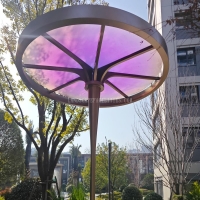Welcome to the website for landscape facilities products and knowledge.
What are the effects of calcium leaching on nearby pavers?
Calcium leaching is a common yet often overlooked issue that can significantly damage nearby pavers. When calcium hydroxide from concrete or mortar dissolves in water and migrates to the surface, it reacts with carbon dioxide to form calcium carbonate—a white, powdery residue. This unsightly efflorescence not only stains pavers but also weakens their structural integrity over time.
The effects of calcium leaching on pavers include discoloration, surface erosion, and reduced durability. The white deposits can penetrate porous materials like brick or natural stone, making them difficult to clean. In severe cases, repeated leaching may cause pavers to crumble or develop cracks due to the loss of binding materials.
To prevent calcium leaching, ensure proper drainage around paved areas, use quality sealants, and select low-calcium construction materials. Regular cleaning with appropriate solutions can also minimize long-term damage. For existing stains, specialized cleaners or mild acid washes may help restore the appearance of affected pavers.
Understanding these effects helps homeowners and contractors maintain beautiful, long-lasting hardscapes while avoiding costly repairs from calcium-related deterioration.
Related search:

Recommendation
Metal frame with gradient color acrylic combined with high-end shading landscape facilities